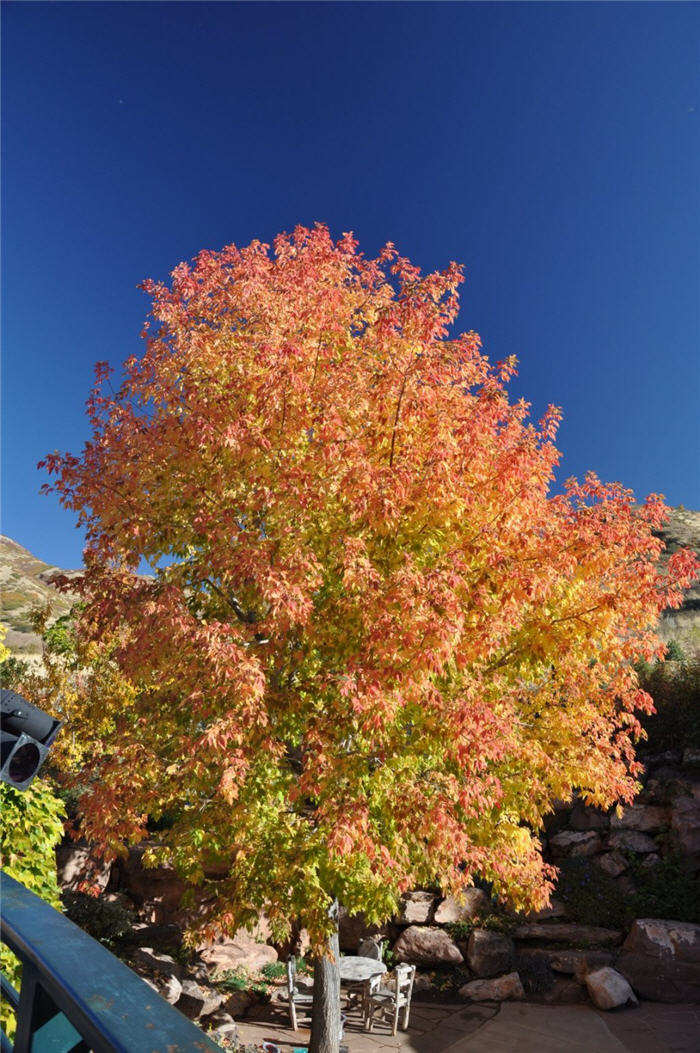| Botanical Name: Acer ginnala 'Flame' | |
| Common Name: Flame Amur Maple |

-
Anatomy
-
Culture
-
Design
Plant Type
Tree, Shrub
Height Range
12-25'
Flower Color
Yellow, White
Flower Season
Spring
Leaf Color
Green
Bark Color
Brown, Grey
Fruit Color
n/a
Fruit Season
n/a
Sun
Full, Half, Shade
Water
Medium
Growth Rate
Moderate
Soil Type
Sandy, Clay, Loam, Rocky, Unparticular
Soil Condition
Average, Rich, Poor, Well-drained, Dry
Soil pH
Neutral, Basic
Adverse Factors
n/a
Design Styles
Formal, Japanese, Woodland
Accenting Features
Fall Color, Multi-trunk Tree
Seasonal Interest
Spring, Fall
Location Uses
Background, Entry, Shrub Border, Parking Strip, Street Tree
Special Uses
Screen, Mass Planting, Shade Tree, Small Spaces
Attracts Wildlife
n/a
Information by: Stephanie Duer
Photographer:
Photographer:
-
Description
-
Notes
Flame Amure Maple is a hardy tree with consistent brilliant orange-red to deep red foliage. Grown from a selected seed source, it was introduced to the nursery trade by the USDA Soil Conservation Service in 1978 and is now widely grown and appreciated for its toughness and adaptability to a wide range of climatic conditions. A low-branched or multi-stemmed tree, it matures to a height and spread of about 20 feet. Leaves emerge light green early in the season; mature foliage is medium green and fined textured.
Grow in full sun to bright shade in any well-drained soil. Excessive moisture may cause crown rot or the bark to split. Prune selectively to shape and control size (see guides); shearing will cause lots of twiggy growth at the tips and eventually lead to a hard, dense branching (imagine a box with leaves) which in turn encourages pest and disease problems.